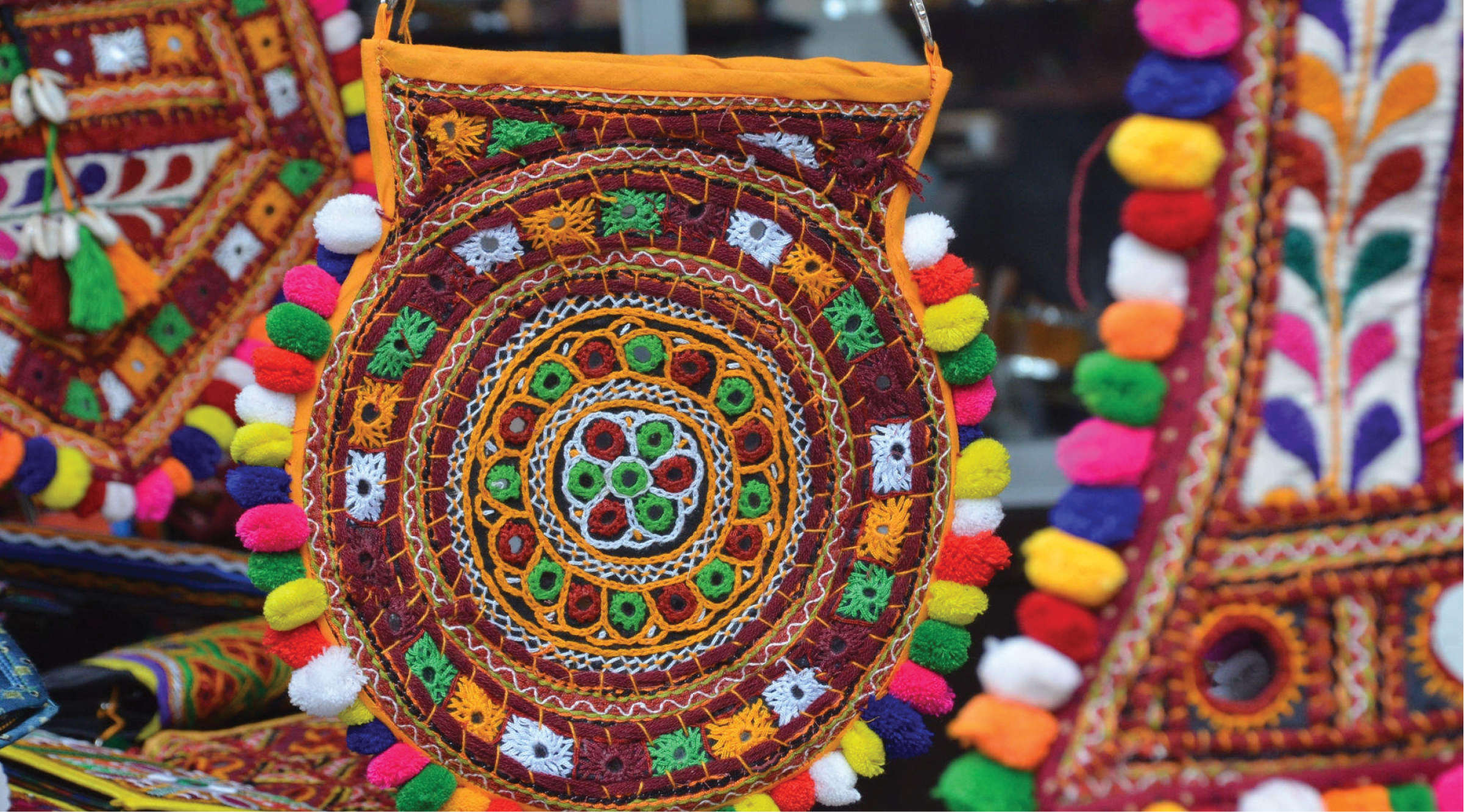While advocating for legal protection for handlooms and handicrafts, Rajni Kant, director of the Human Welfare Association stated that “the fabric of India has to be safeguarded.” In terms of Purvanchal’s fabric, our handlooms and handicrafts, whether Gorakhpur terracotta, Banarasi sarees, or Bhadohi carpets, require legal identification and protection. It is about more than just our handloom sector; it is also about our cultural legacy.
Because it is linked to job chances for crores of people in the country through entrepreneurship and startups, legal protection is essential. It occurred as a result of our failure to preserve and defend it. So that there is no confusion, all handicrafts should be labelled with a geographical indication (GI). It is necessary to take steps to resurrect forgotten handicrafts.
Rina Dhaka, a fashion designer, talks about popularising khadi through many channels, including fashion shows and Bollywood films. “We need to make khadi a regular part of our lives, not only on exceptional occasions.” Artists, singers, and other performers get patents, copyrights, and trademarks to protect their work because it is their personal property, but what about community properties such as Lucknow’s chikankari, Gorakhpur’s terracotta work, and others? If not protected, both the artist and the artwork will perish.
INTRODUCTION
Geographical Indications of Goods are described as an attribute of industrial property that relates to a geographical indication designating a nation or a location within that country as the country or place of origin of a product. On September 15, 2003, the Geographical Indications of Goods (Registration and Protection) Act of 1999 went into effect. This is a general law aimed at providing better protection to India’s indigenous peoples. The Geographical Indications Registry in Chennai is in charge of the registration.
SHOULD HANDICRAFTS GET GI TAGS TO PROTECT IDENTITY?
The Geographical Indicators of Goods (Registration and Protection) Act of 1999 allows handicrafts (including handlooms) to be registered as geographic indications (GI). Handicraft (& Handlooms) are included under Section 2(f) of the Act, which specifies that “items” include agricultural, natural, and manufactured goods, as well as handicraft (& Handlooms) and industrial goods. According to Section 7(3) read with Section 17 of the Act, handicraft artists and weavers can be registered as Authorized Users for registered Geographical Indications. Any person claiming to be the producer of products for which a geographical indication has been registered under section 6 may apply in writing to the Registrar in the appropriate way for authorization to use the geographical indication.
As of July 31, 2016, 1152 GI Authorized Users for handcraft (& Handloom) items had been registered under the Act. Geographical indicators are protected and conserved in a variety of nations and regional systems using a variety of methods, frequently combining two or more methods. A geographical indicator can be protected in three ways: So-called “one-of-a-kind” systems (i.e. special regimes of protection), Techniques focusing on business operations, such as administrative product clearance schemes, using collective or certification marks.
WHAT RIGHTS DOES A GEOGRAPHICAL INDICATION PROVIDE?
A geographical indication right allows those who have the right to use the indicator to prevent it from being used by a third party whose product does not meet the requirements. In places where the Darjeeling geographical indication is protected, for example, producers of Darjeeling tea can prohibit the use of the word “Darjeeling” for tea not cultivated in their tea gardens or prepared according to the requirements outlined in the geographical indicator’s code of practise. However, the holder of a protected geographical indication cannot prevent someone from creating a product using the same procedures as those specified in the indicator’s specifications. A geographical indicator is generally protected by obtaining a right over it.
BENEFITS OF GI TAGS
1. The items are legally protected.
2. Prevents people from using GI tag items without permission.
3. It enables customers to obtain high-quality items with required characteristics while also ensuring their authenticity.
4. Increases the demand for GI tag items on national and international markets, hence promoting the economic prosperity of GI tag manufacturers.
Smriti Irani, the Union Textiles Minister, has stated that the GI designation benefits not just weavers and craftsmen, but also customers. The GI label guarantees that you’ll get the right goods at the right price, straight from the weaver or craftsman. Irani further stressed the significance of raising consumer awareness about the issue. Noting that many of the issues in GI arise after acquiring GI registration, the minister emphasised the need of raising awareness of the significance of GI among all stakeholders in order to improve the law requirements’ execution. Irani declared that a GI assistance desk would be established shortly in every government-run service centre forweavers and craftsmen.
This would help to close the information gap between the centre and the field, allowing weavers and craftspeople to profit from GI. This is being done to improve governance, as part of the government’s ‘Sabka Saath Sabka Vikaas’ developmental ideology.
She also established a helpline for craftsmen who make handicrafts. The minister further stated that the government has decided to provide a 75% tuition subsidy to children of weavers and artisans from BPL households who wish to pursue NIOS and university education.
Ajay Tamta, Minister of State for Textiles, stated that GI adoption would be extremely beneficial to the handicraft and handloom sectors, particularly in terms of protecting and preserving the rich cultural heritage associated with them, as well as contributing to the social and economic empowerment of handloom weavers and handicraft artisans. Through the supply of necessary information, the artisan helpline would empower the last person on the street.
The government wants to confer geographical indicator (GI) designation on over 75 specific items that are unique to an area, as well as an overall brand identity for handcrafted products from India, in order to combat cheap imitations and boost the brand equity of Indian handicrafts.
A product’s GI defines it as having originated in an area where its quality, reputation, or other characteristics are mostly related to its location. Although handloom items such as Pochampalli sarees and Chanderi silk already enjoy intellectual property rights protection under the Geographical Indications of Goods (Registration and Protection) Act, 1999, this is the first time handicrafts have been granted GI classification.
To improve their exposure and sales in the global market, the government is progressively attempting to brand items that are unique to India. After losing the patent on Basmati rice in 1999, India realised the realities of IPR challenges with its unique products.
GEOGRAPHICAL VARIATION EXAMPLES
Assam’s iconic golden-yellow Muga silk has been given Geographical Indication designation by Chennai’s GI Registry, bringing joy to the makers. This is the first time an Assamese product has received the famous GI designation. The registration, which was completed on July 20, 2008, was based on the distinctiveness of Muga silk and its traditional heritage, which is intimately intertwined with that of Assam, according to sources. Muga silk is produced by the Assamese silkworm Antheraea assamensis. It has a golden colour and a lustrous texture. With each wash, the shine improves. The mekhela-chador, traditional clothing worn by brides and ladies participating in bihu dances, is also made from it. Muga is a very popular product in Japan, where it is used to make kimonos.
Khadi styling should begin at this stage.This is the method to bring people together, but you won’t find a single family who is. When a top model or a Bollywood celebrity wears khadi, it is certain to be emulated by the younger generation, bringing us closer to our own fabric. The Jamdani craftsmanship of Akbarpur is an example of such disappearing handicrafts. Jamdani cloth was widely used across the country.
The Kashmiri Pashmina received the Geographical Indications of Goods patent, which is similar to intellectual property rights. However, due to the worldwide economic downturn, the gains that were meant to flow from the patent have been washed away. The Kashmiri Pashmina is experiencing the same difficulties as another ancient Kashmir valley product, carpets. As it stands, the Pashmina is suffering from the proliferation of fakes, which is decimating the original since clients are unable to tell the difference between an original and an imitation Pashmina. Similarly to how thousands of artisans are leaving the carpet manufacturing business for greener pastures, traditional weavers are abandoning the pashmina industry as revenue has plummeted, owing to global market recessionary tendencies.
CONCLUSION
Geographical Identification was introduced in the handloom sector to protect product identity, but weavers are experiencing problems with duplication after receiving GI. Geographical Indication may be used by anybody in the region of origin who manufactures the good according to defined criteria; nevertheless, because of its relationship to the place of origin, a GI cannot be issued or licenced to anyone outside that location or who is not a member of the approved producers group.







